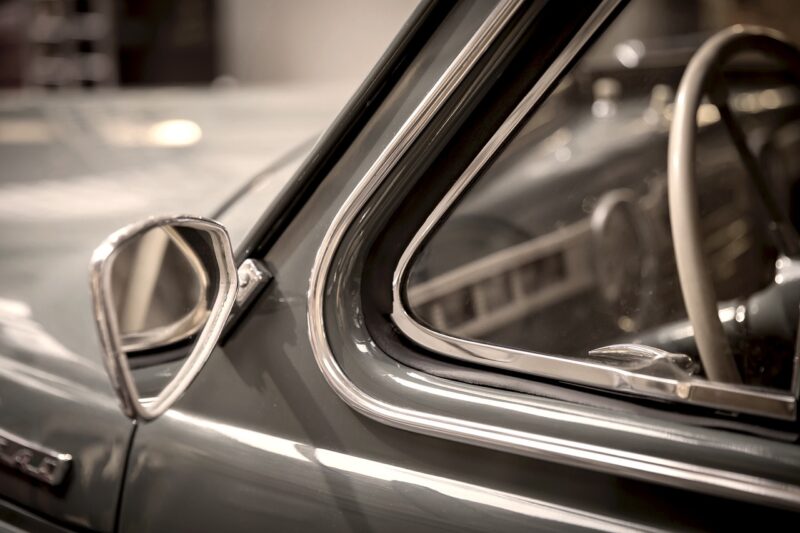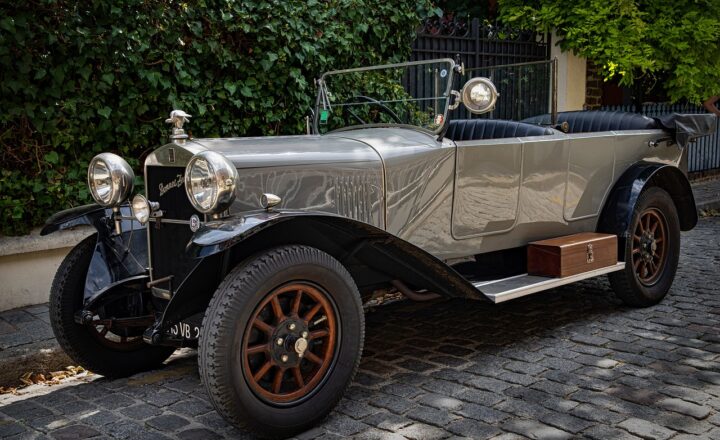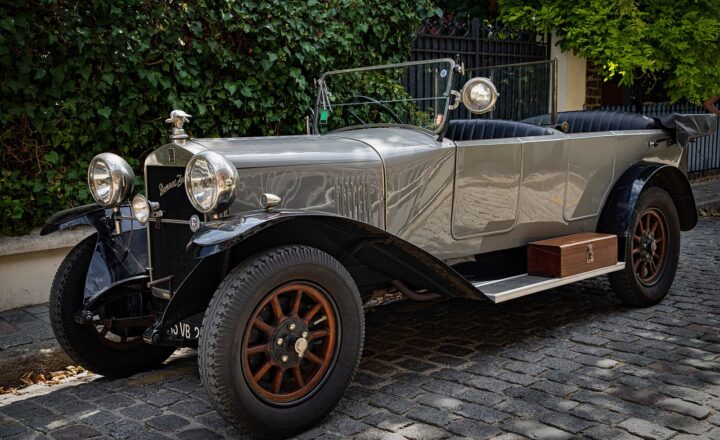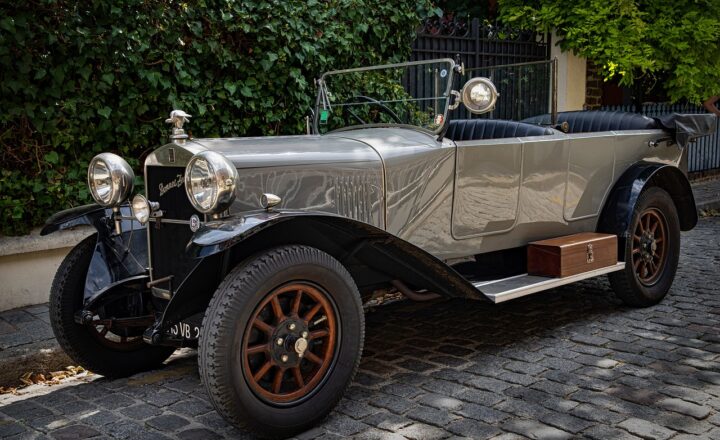The Future of Classic Cars: What Will Be the Next Big Collectible?
November 10, 2024

Classic cars have long mesmerized enthusiasts and collectors alike, not just as modes of transportation but as pieces of art, history, and engineering marvels. As we move into a new era where technology, sustainability, and generational shifts redefine collecting trends, one question looms larger than ever: What will be the next big collectible in the world of classic cars?
1. The Allure of Classic Cars
Classic cars are not merely machines; they’re embodiments of their time. From the iconic designs of the 1960s muscle cars to the elegance of vintage European sports cars, each vehicle tells a story. Collectors often seek cars that evoke nostalgia or represent a significant era in automotive history.
It’s important to differentiate between classic, vintage, and collectible vehicles. Generally, a classic car is considered to be any vehicle over 20 years old, while vintage cars typically refer to models produced between 1919 and 1930. Collectible cars, however, are often newer models that have gained popularity due to design, performance, or limited availability.
The surge of interest in classic cars can be traced back to several factors:
- The charm and authenticity of older models that modern cars lack.
- The sense of accomplishment and enjoyment of restoring or maintaining a classic vehicle.
- Potential financial gain, as classic cars often appreciate in value over time.
2. Current Trends in Classic Car Collecting
The classic car market has undergone substantial changes. Notably, certain trends hint at the future of collectible cars:
– Electrification of Classics: Many manufacturers are revamping classic models into electric vehicles, marrying nostalgia with contemporary technology. This has drawn interest from younger collectors who appreciate classic aesthetics but prefer sustainable options.
– Resto-Mods: The trend towards restomods—restored vehicles equipped with modern features—has gained immense popularity. These hybrids maintain the aesthetic of the classic car while improving safety and performance characteristics. It appeals to a broad audience, particularly those who desire the best of both worlds.
– Rise of SUV Classics: As the automotive landscape shifts to favor SUVs, we see traditional SUVs, like the Ford Bronco and Jeep Wrangler, becoming collectibles. Their ruggedness and utility resonate with a new generation of outdoor enthusiasts.
– Interest in Japanese Classics: Cars from the ’80s and ’90s are rapidly gaining collector status, influenced by their unique designs and nostalgic value. Brands like Toyota, Nissan, and Honda are at the forefront, with models such as the Nissan Skyline GT-R and Toyota Supra leading the pack.
3. Factors that Determine Future Collectibility
Collectibility in cars hinges on various factors, which will shape the next big collectible:
– Rarity: Models produced in limited quantities tend to be highly regarded. Cars like the Lamborghini Miura, with its small production run and iconic status, highlight how rarity influences value.
– Historical Significance: Cars that played pivotal roles in automotive innovation or pop culture often capture the hearts of collectors. Vehicles documented in films, like the DeLorean from *Back to the Future,* gain added desirability through their cultural impact.
– Performance and Engineering: Collectors appreciate not just aesthetics but the engineering prowess behind a vehicle. Models that showcase cutting-edge technology or engineering feats will oftentimes find their way into the hearts of collectors.
– Condition and Originality: The better the condition of a vintage car, the more potential it has for appreciation. Original paint, parts, and documentation significantly boost value.
– Community Engagement: Automotive clubs and shows promote awareness and desire for specific models. As more enthusiasts gather together, certain cars gain popularity through word of mouth and shared experiences. The grassroots level of car culture can radically change market dynamics.
4. Predicting the Next Big Collectible
So, what might the next big collectible classic cars be? Let’s examine potential frontrunners:
– Electric Collectibles: OG Electric Vehicles (EVs) such as the Tesla Roadster or the BMW i3 could become the new classics of the future. As we move toward a more sustainable automotive future, early adopters like these may find themselves in esteemed places within future collections.
– Future Classic Brands: Automakers like Ford, with cars like the Mustang or the Ford GT, and Ferrari with unique models like the F8 Tributo are poised to bear the mark of future collectibles. The combination of brand loyalty and nostalgic appeal will drive interest in these vehicles.
– Modern Supercars: The rise in popularity of modern supercars is creating new vehicles that might one day join the collectible ranks. Models from Pagani, Koenigsegg, and McLaren are not only designed for performance but are often produced in limited quantities, ensuring their future desirability.
– Luxury SUVs: With high-performance SUVs emerging, such as the Lamborghini Urus and Aston Martin DBX, we may see these vehicles becoming future collectibles. The blend of luxury, performance, and practicality is increasingly appealing to younger buyers.
– Unique Restorations: As restorations evolve, so will the potential for unique vehicles to gain collectible status. Customized collector models with distinctive modifications might spark interest, especially if they become emblematic of particular trends.
5. The Future of Collecting: Embracing Change
Classic car collecting has always been impactful. Yet, as we progress, embracing transformation is vital. Shifting perceptions on sustainability, electric technology, and environmental consciousness indicate that future collectibles may not resemble those of the past.
Collectors of tomorrow will likely emphasize:
- Sustainability and eco-friendliness in vehicle ownership.
- The intersection of technology and tradition, valuing cars that merge classic aesthetics with modern functionalities.
- A broader understanding of value that may lead to emerging types of collectibles beyond traditional classifications.
As the collector community adapts to these changes, predictions regarding the next big collectible will vary widely, and that is what makes it exciting.
Conclusion: The Journey Ahead
While it is impossible to predict the future with certainty, one thing is clear: the landscape of classic car collecting is evolving. The thrill of the automobile is no longer limited to gas-powered machines with chrome bumpers; it now encompasses a broader spectrum shaped by innovation, nostalgia, and sustainability.
As we step into this new age of collectibles, enthusiasts old and new will need to keep an eye on the trends and remain open-minded about what they consider future classics. Will you be on the cutting edge of the next big collectible, or will you cherish your classic treasures in their vintage glory? Only time will tell, but the journey will be thrilling regardless of the destination.








